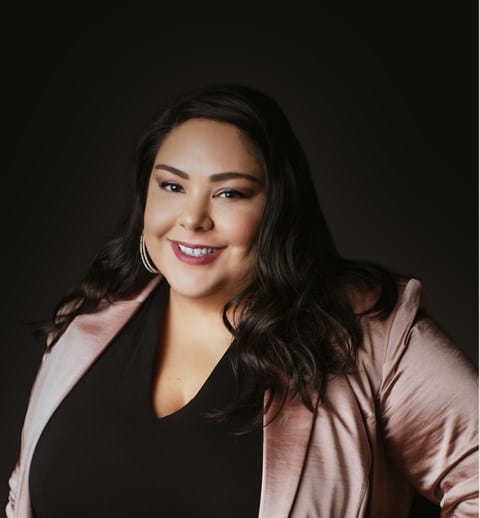It’s a dream of many young, bright minds to attend medical school, graduate, and begin a rewarding profession in the medical field. But achieving one’s dream comes at a price.
With the cost of medical school tuition ever-rising, medical students often struggle with how to manage the student loan debt they’ve accumulated upon graduation.
According to the data collected by the Association of American Medical Colleges, the average medical school debt for those graduating in 2019 was $201,490. This is a startling number for graduates. And worse, this figure doesn’t include debt from undergraduate degrees.
Luckily, there are many things medical school loan borrowers can do to make the process of repaying medical school debt less troublesome. These include determining how to qualify for Public Service Loan Forgiveness or opting to refinance medical school loans.
What is public service student loan forgiveness?
Many medical school graduates look to Public Service Loan Forgiveness to provide relief from sky-high school debt.
The Public Service Loan Forgiveness programs when the federal government pays off the remaining student debt of those who have been employed by a qualifying organization for a certain amount of years.
Qualifying organizations include a variety of government and nonprofit companies, and PSLF participants need to pay a total of 120 monthly payments over 10 years in order to have their remaining debt cleared.
While this a great option for those that qualify due to their employer, there are still those medical students that will struggle to pay their loans for years or perhaps decades after they’ve earned their degree.
Other types of student loan forgiveness
Due to the outstanding demand for medical professionals and primary health physicians in the United States, there are a number of student loan forgiveness programs in place to help medical school graduates relieve at least some of their debt.
These loan forgiveness and repayment programs can be sponsored by local, state, and national governments or through the assistance of private organizations. Many factors determine eligibility for loan forgiveness.
To qualify for these, physicians who have completed their residency may be recruited to practice medicine in areas of high need, or health professional shortage areas (HPSAs). Although benefits for these types of programs can vary, on average, participants receive living stipends and medical school student loan forgiveness in exchange for completing a few years of service in these designated areas. There has also been legislation introduced to provide loan forgiveness for medical professionals on the front line of the COVID-19 pandemic.
While incentives like student loan forgiveness offer public service employees the opportunity to clear their school debt, this isn’t an option for all medical school graduates. There are certain criteria one must meet in order to qualify. But there are other medical school student loan forgiveness options medical professionals can take advantage of. It’s advised that graduates carefully explore these options to determine the best course of action for repayment in the future.
Repayment assistant programs
If you fail to meet eligibility for student loan forgiveness programs, don’t worry. There are other ways to secure financial aid, such as through repayment assistance programs.
Income-driven repayment plan forgiveness for federal loans is just one example. Factors that come into play when determining eligibility for this type of assistance include income, student loan balance, and family size. Typically, if eligible, your loan provider will extend your repayment term for a period of 20 to 25 years. Additional benefits include repayment caps based on your discretionary income.
Other national debt repayment assistance programs include:
- National Health Service Corps Loan Repayment
- National Health Service Corps Substance Use Disorder Loan Repayment
- National Health Service Corps Students to Service Loan Repayment
- National Institute on Minority Health and Health Disparities Loan Repayment
- National Institutes of Health Loan Repayment
- Indian Health Service Loan Repayment
There are also other federal and state-level repayment plans to explore if you don’t qualify for any of the above.
Loan forgiveness alternatives
Not everyone qualifies for loan forgiveness or repayment assistance, but that doesn’t mean you are stuck with the loan terms you agreed to years ago.
Another effective and smart option for health professionals to pay their school debt more quickly with less interest costs is student loan refinancing.
Student loan refinancing is an excellent financial tool for medical professionals who are searching for ways to get rid of a large quantity of debt fast with a lower rate. Refinancing your student loans is one of the single best things you can do to save money when dealing with your debt repayment.
How to refinance medical school loans
To refinance medical school loans, you will borrow money from a private lender and use those funds to pay off your school debts. Instead of several high-interest monthly payments, you will now be responsible for one monthly payment that may carry a lower interest rate. This can save borrowers thousands of dollars throughout the course of their debt repayment.
There are several reasons why a growing number of medical professionals are exploring options to refinance medical school loans. In fact, medical professionals make excellent candidates for student loan refinancing. For one, lenders often look to factors like debt-to-income ratio and credit score when offering lending terms. High job prospects and large salaries for medical professionals also means a low debt-to-income ratio is likely, while those bigger salaries can also mean better credit which will secure lower interest rates and result in more savings.
Refinancing your student loans is a great way to ensure a brighter financial future. Luckily, you don’t have to go at it alone. Purefy’s Compare Rates tool is available to help you compare rates between different lenders, giving you all the information you need to make a wise decision for your future.
Our tool can help you dive deep into your refinancing choices so that you’re never left in the dark when it comes to your debt. Whether you’re a recent medical school graduate or a seasoned healthcare professional hoping to consolidate your debt and take better control of your finances, refinancing your medical school debt may be the best move for you.
















